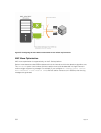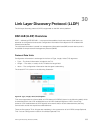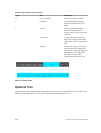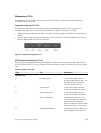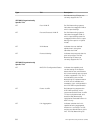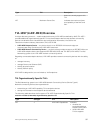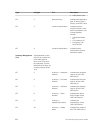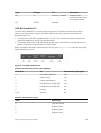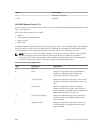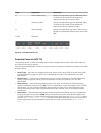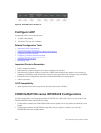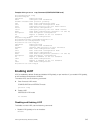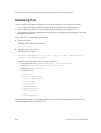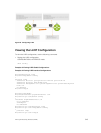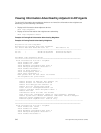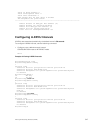
Value Device Type
4 Network Connectivity
5–255 Reserved
LLDP-MED Network Policies TLV
A network policy in the context of LLDP-MED is a device’s VLAN configuration and associated Layer 2 and
Layer 3 configurations.
LLDP-MED network policies TLV include:
• VLAN ID
• VLAN tagged or untagged status
• Layer 2 priority
• DSCP value
An integer represents the application type (the Type integer shown in the following table), which indicates
a device function for which a unique network policy is defined. An individual LLDP-MED network policy
TLV is generated for each application type that you specify with the CLI (XXAdvertising TLVs).
NOTE: As shown in the following table, signaling is a series of control packets that are exchanged
between an endpoint device and a network connectivity device to establish and maintain a
connection. These signal packets might require a different network policy than the media packets
for which a connection is made. In this case, configure the signaling application.
Table 37. Network Policy Applications
Type Application Description
0 Reserved —
1 Voice Specify this application type for dedicated IP
telephony handsets and other appliances
supporting interactive voice services.
2 Voice Signaling Specify this application type only if voice control
packets use a separate network policy than voice
data.
3 Guest Voice Specify this application type for a separate
limited voice service for guest users with their
own IP telephony handsets and other appliances
supporting interactive voice services.
4 Guest Voice Signaling Specify this application type only if guest voice
control packets use a separate network policy
than voice data.
5 Softphone Voice Specify this application type only if guest voice
control packets use a separate network policy
than voice data.
540
Link Layer Discovery Protocol (LLDP)



